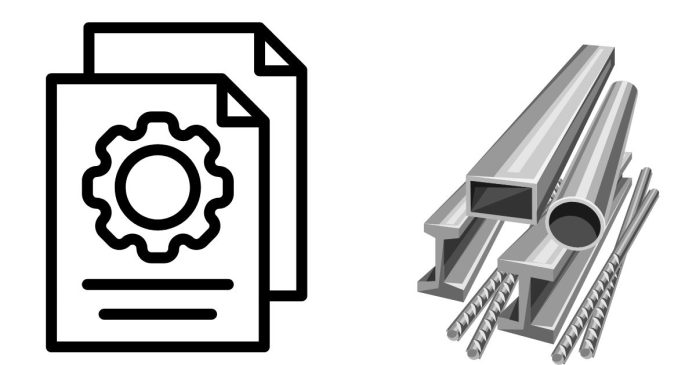What Is the Full Form of WPS Metal? A Guide to Welding Procedure Specification (WPS)
If you’ve ever worked with welding or are involved in metal fabrication, you may have come across the term WPS Metal. But what exactly does WPS mean in the context of metalworking, and why is it important? In this post, we’ll break down the full form of WPS and explore its significance in welding and metal fabrication.
Understanding WPS: Welding Procedure Specification
The full form of WPS is Welding Procedure Specification. It’s a detailed document that outlines the specific procedures, parameters, and techniques that must be followed to ensure that a welding job is completed safely, efficiently, and to the required standards.
When we add “Metal” to the term, it simply refers to the materials being welded—whether it’s steel, aluminum, or other alloys. A WPS Metal provides the necessary guidelines for welding specific types of metal, making sure that the process is consistent, reliable, and meets the necessary quality and strength requirements.
Why Is WPS Important in Metal Welding?
Welding is a critical process in industries like construction, manufacturing, automotive, and aerospace. The quality of a weld directly impacts the safety, durability, and performance of the final product. A WPS ensures that the welding procedure is followed correctly, helping to avoid defects such as weak joints, cracks, or incomplete fusion.
Here are some key aspects that a Welding Procedure Specification (WPS) will typically cover:
- Type of Welding Process: Whether it’s MIG (Metal Inert Gas), TIG (Tungsten Inert Gas), Stick welding (SMAW), or any other welding method.
- Base Material: The type of metal being welded, such as stainless steel, carbon steel, aluminum, or other alloys.
- Filler Material: The welding rods or wires used to fill the joint, including the type and grade of the filler material.
- Pre-Heat and Post-Heat Temperatures: The required temperature ranges for preparing the metal before welding and cooling it after welding.
- Welding Positions: Whether the weld will be made in flat, horizontal, vertical, or overhead positions.
- Heat Input and Welding Technique: The specifics on how much heat is applied during the welding process to ensure proper fusion without damaging the material.
- Welder Qualifications: Information on the certification required for the welder, ensuring they are qualified to perform the procedure.
How Does a WPS Benefit Metalworking Projects?
- Consistency and Quality Control: A WPS ensures that every weld is made using the same process and parameters, leading to consistent results across a project. This is critical for high-quality and reliable joints, especially in industries with stringent safety standards, like aerospace or oil and gas.
- Compliance with Standards: In many industries, welding procedures must comply with codes and regulations set by organizations such as the American Welding Society (AWS) or the American Society of Mechanical Engineers (ASME). A WPS helps ensure compliance with these standards, which can be crucial for legal and safety reasons.
- Safety: Welding involves high temperatures, electrical currents, and heavy machinery. A WPS minimizes the risk of accidents by providing clear instructions on the proper procedures, materials, and equipment to use.
- Time and Cost Efficiency: A well-documented WPS helps reduce trial-and-error during the welding process, saving time and minimizing the chances of costly mistakes or rework.
Key Components of a Welding Procedure Specification (WPS)
A typical WPS Metal document includes:
- Procedure Identification: A unique identifier or reference number for the WPS.
- Base Metal Specifications: Information about the type and grade of metal being welded.
- Welding Process and Equipment: Details on the welding process (e.g., MIG, TIG) and the equipment settings.
- Welding Parameters: Information on voltage, amperage, speed, and wire-feed rate (if applicable).
- Pre-heat and Post-heat Requirements: Specific temperature ranges for preparing and cooling the metal.
- Joint Design: Describes the shape and fit of the metal pieces being welded.
- Test Requirements: Guidelines on testing and inspecting the weld for strength and integrity.
- Safety Precautions: Any necessary safety measures to take during the welding process, such as ventilation or protective gear.
Conclusion: The Importance of WPS in Metal Fabrication
In the world of metalworking and welding, the Welding Procedure Specification (WPS) is an essential document for ensuring that welding jobs are performed correctly, safely, and to the required quality standards. Whether you’re working with stainless steel, carbon steel, aluminum, or any other metal, having a well-defined WPS Metal helps guarantee that your welding process will result in strong, reliable, and durable joints.
By following the guidelines set out in a WPS, welders can avoid errors, reduce risks, and ensure their work meets both industry standards and customer expectations. So, the next time you embark on a welding project, be sure to refer to your WPS—because it’s the blueprint for success in the world of welding!
Related posts:
- What does ringing in the ears mean spiritually?
- What Colors Do Blue and Green Make?
- How Long Does Raw Chicken Really Last in the Fridge?
- What are some amazing and memorable Valentine’s Day ideas that will leave a lasting impression?
- What is the definition of ‘friends with benefits?
- What is the difference between a bachelor’s and a degree?


